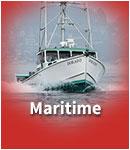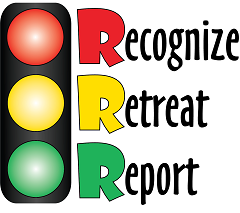Maritime

In July 1965, a tragedy took place aboard the fishing vessel (FV) Snoopy resulting in the loss of the vessel and the deaths of eight of her crew. The FV Snoopy was trawling for scallops off the coast of North Carolina when she caught a torpedo in her net. The crew was unsuccessful in their attempts to remove it from the net and while attempting to bring it aboard, the torpedo struck the ship and detonated resulting in the loss of the crew and vessel. Although the captain recognized the danger, his option for retreating potentially involved loss of his drag net and that course of action was not taken. This unfortunate incident highlights the danger of munitions at sea.
During maritime operations (e.g., fishing, clamming or underwater construction), nets, bottom tending gear and dredges may catch or dredge munitions from the seafloor. Munitions that may be inadvertently recovered pose a real danger to vessels and their crews as well as to commercial and recreational divers.
Recognize that munitions may be encountered anywhere, not just in charted hazard areas. Munitions that may be encountered include mines, torpedoes, depth charges, artillery shells, bombs and missiles. Munitions may contain explosives or chemical agents, both potentially posing serious dangers to a vessel and her crew.
Munitions submerged in sea or fresh water for any length of time may:
- Look new and be easy to identify;
- Be heavily rusted or encrusted with sea growth and be difficult to identify.
- Have deteriorated or become more sensitive.
Whether encountered at sea or on land, munitions might explode when moved, disturbed, or handled.
To protect the public, public assets and other vessels, never bring a munition into port, unless directed to do so by the US Coast Guard.
There are specific actions that a captain and crew can take to protect themselves, the vessel and the public if they encounter or suspect they have encountered a munition. By following the 3Rs of Explosives Safety, mariners will know what to do if they inadvertently recover a munition. To protect yourself and your co-workers, learn to follow the 3Rs of Explosives Safety.
- Recognize – when you may have encountered a munition and that munitions are dangerous.
- Retreat – when possible, carefully either discard the munition overboard or secure it in place.
- Report – immediately notify the Captain or the police.
For more detailed information, read the 3Rs Explosives Safety Guide for the Maritime Industry.
3Rs of Explosives Safety

when you may have encountered a munition and that munitions are dangerous.
do not approach, touch, move or disturb it, but carefully leave the area.
call 911 and advise the police of what you saw and where you saw it.
FAQ (Frequently Asked Questions)
What do I do if I have recovered a munition and it is onboard?
- If gear with a munition or suspected munition in it is brought over the deck, but it remains suspended and can be safely secured in place or nearby, immediately:
- Secure the munition with guy lines to prevent movement;
- Keep the crew upwind and away from the area.
- If a munition or suspect munition is brought onboard, keep crew members upwind and as far away as possible.
- Minimize handling, and decide whether it is safest to:
- Carefully return it to the water, or
- Retain it onboard.
- If returned to the water, note and report position to US Coast Guard.
- If retained onboard:
- Keep the crew upwind and away from the munition.
- Minimize handling, and avoid disturbing (hitting, dropping or bending) any part of the munition;
- Secure the munition on deck with lines or by chocking it to prevent movement, but do this as far away as possible from heat sources, vibrations and the crew;
- Cover the munition with a tarp or wet cloth to reduce the potential for:
- Deterioration of metal parts and release of its fill;
- Explosives to dry out and become sensitive to shock.
- Request assistance (Channel 16 – 156.800 MHz).
What do I do if munitions are recovered, but are not yet onboard?
- Immediately stop all operations;
- Do not bring the munition or gear containing it onboard, if possible;
- Do not allow the munition to come or remain alongside the vessel where wave action could cause the munition to contact the hull;
- If a munition is caught in the gear, but has not been brought onboard, try to lower it safely back into the water, note the position and report it to the USCG.
- In:
- Shallow water (less than 130 feet), lower the munition to the bottom, buoy off the net or dredge recovery lines and remain in the area while awaiting assistance.
- Deep water, stream the munition as far aft as possible, maintain steerageway, as necessary, and remain in the immediate area while awaiting assistance.
What should I do if I suspect that a chemical munition or chemical agents are present?
-
Vessel crews should be alert for following signs that a chemical munition or chemical agents are present:
- Unusual odor from equipment or fish;
- Stinging sensations in the eyes;
- Burning or irritated skin;
- Presence of an oily liquid;
- Corroded containers or suspicious clay-like lumps.
-
If you suspect a chemical munition or agent is present, act immediately to protect the crew and vessel.:
- Move all crew members upwind;
- Steam into the wind to carry any contaminants away from the crew;
- Close all doors and hatches;
- Shut down all ventilation systems;
- Flush the area thoroughly with water to wash suspect chemical agent overboard;
- Contact the U.S. Coast Guard (USCG) for immediate assistance;
- Do not steam into port, unless the USCG advises you to do so.
-
If you suspect contamination by chemical agents:
- Remove any contaminated or potentially contaminated clothing and place it in a plastic bag (double bag, if possible) and seal it or just throw the clothing overboard. (Similar actions should be taken with contaminated or potentially contaminated tools.)
- Rinse the crew and the immediate area with large amounts of water. (If possible, use warm soapy water.)
- Every effort should be made to prevent the potential spread of chemical contamination. Chemical agent-contaminated clothing and tools may expose other crew members to chemical agent and spread the contamination to other areas on the vessel. Crew members should not work in areas known or suspected to be contaminated by chemical agent. Vessels that may have come in contact with chemical agents should not bring their catch ashore until the state’s department of environmental health has determined it is safe to do so.
Summary:
Munitions present a potential explosive or chemical agent hazard; they should not be approached moved, disturbed or handled. However, at sea and depending on the circumstances, specific action may be required to protect the vessel and her crew.
- Avoid bringing munitions (or suspect munitions) onboard, whenever possible.
- If a munition is ensnared or fouled in gear, retreat by carefully returning the munition to the water or by cutting away the gear.
- If the munition cannot be carefully returned to the water, secure it onboard, and move the crew upwind and as far away from the munition as possible.
- Limit the number of crew members securing the munition, and avoid bumping or dropping the munition. Remember that each action carries some risk!
Never bring a munition into port!
When a munition or suspect munition is encountered, the vessel’s captain should report it to the U.S. Coast Guard (Channel 16 – 156.800 MHz) and provide the below information, as soon as possible. (Note: If a munition is encountered while in port, call 911.)
Report:
- The vessel’s position (use World Geodetic System 1984 [WGS-84] for reporting). If the exact position is unknown, give approximate coordinates, or a range and bearing from a charted feature.
- The activity (e.g., fishing, clamming, dredging) being conducted when the munition was encountered.
- The activity (e.g., fishing, clamming, dredging) being conducted when the munition was encountered.
- Any unusual odors.
- If the munition was returned to the water, provide:
- The position where it was returned to the water: the water depth, buoys or markings used, if any; and whether the location is near or within a charted disposal area;
- A description, if appropriate, of any entanglement (e.g., net, dredge);
- A description of surface or sub-surface structures within 1,000 yards.
THE U.S. COAST GUARD WILL NOTIFY AN EXPLOSIVE ORDNANCE DISPOSAL UNIT TO ARRANGE FOR SUPPORT.
Resources
Maritime Incidents
In 2010, workers at a Massachusetts shellfish processing plant broke open a muck covered crate that was delivered with a catch of clams. Once opened, the workers recognized the contents as grenades and the plant was evacuated. When emergency responders arrived to investigate the reported munitions, they discovered 126 grenades at the plant. The grenades were transported to a nearby site and detonated. The explosives were still dangerous even though it appeared that the grenades had been at sea for decades. By following the 3Rs of Explosives Safety (Recognize, Retreat, Report), the workers protected themselves and the business disruption was kept to a minimum.
http://www.upi.com/Odd_News/2010/04/24/Shellfish-workers-net-WWII-era-grenades/74941272152918/
In 2004, a man collected a bucket of munitions from crushed clamshells that were delivered to pave his driveway. He took the bucket of munitions grenades to a local police station. The police immediately recognized the danger, evacuated the building, and waited for the police bomb squad and a military Explosive Ordnance Disposal unit to respond. An Army investigation determined these munitions had inadvertently been recovered during commercial clamming off the New Jersey coast. The Army immediately took action to educate the public on the 3Rs (Recognize, Retreat, Report) of explosive safety. Although the man recognized the munitions posed a potential danger, he did not recognize that by picking them up and moving them he was placing himself and others in great danger.
http://articles.baltimoresun.com/2005-12-25/news/0512250172_1_mustard-ocean-shell
